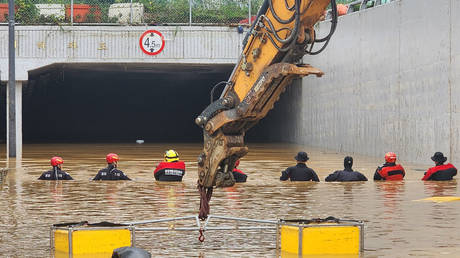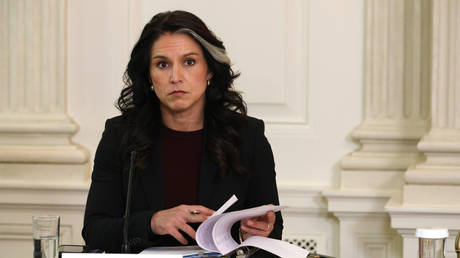
The number of people dead or missing following flooding rains has climbed to 49
The death toll from South Korea’s heaviest rains in a decade has risen to 40 after four additional bodies were recovered from a flooded highway underpass near the central city of Cheongju.
There were also at least nine people still missing as of Monday, and dozens more were injured by landslides and other effects of the flooding rains, according to the South Korean Interior Ministry. President Yoon Suk-yeol, who returned to Seoul on Monday following a surprise visit to Ukraine, said the disaster was worsened by his government’s failure to follow disaster-response policies in the most vulnerable areas.
Thirteen people were found dead in the flooded Cheongju underpass. The passageway was submerged by flash flooding on Saturday, when the Miho River levee collapsed. The body of a bus driver was among those recovered overnight on Sunday. Five of his passengers also perished. More casualties may be discovered as rescuers drain the tunnel and search an estimated 17 submerged vehicles.
Police are reportedly investigating why the underpass wasn’t closed to traffic despite the known flood risk and prior warnings of the levee collapse. Opposition lawmakers have called the flooding deaths a “man-made disaster” because proper evacuation and safety measures weren’t employed.
Thousands of people have been evacuated during the flooding, including 6,400 in largely rural Goesan County, where low-lying villages were submerged when the waters flowed over a dam. Residents who didn’t evacuate were trapped in their homes as connecting roads and bridges were cut off. As of Monday, more than 4,300 people hadn’t yet been able to return to their homes.
More than 600 millimeters (24 inches) of rain has fallen in the past week in parts of South Korea. More heavy rains were predicted, falling at rates of up to 40 millimeters per hour, in some of the hardest-hit areas.
READ MORE: ‘Drink Fukushima water,’ China tells UN officials
The deadly flooding marks one of South Korea’s worst natural disasters since heavy rains in July 2011 triggered flash floods and landslides that killed at least 49 people.




